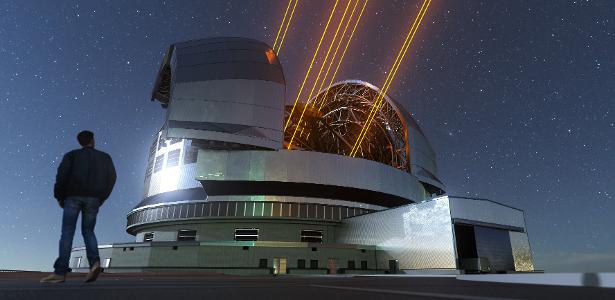Ago First pictures of James Webb Released in early July, all astronomy fans are talking about is the promise of a revolution for their new space telescope.
nor less. After all, James Webb truly represents a leap in our ability to study and understand the universe, from the formation of planets around stars to the birth of the first galaxies.
But is this space observatory the ultimate answer, the telescope to eliminate all other telescopes? naturally!
Scientists are working hard to take the next step, building the next ultra-powerful telescopes. And the largest telescopes on Earth, to be built over the next decade, come in a trio: the 24m Giant Magellanic Telescope (GMT), the 30m Telescope (TMT), well, the 30m, and the Very Large Telescope (ELT), with a maximum diameter of 39 meters.
Observatories will be located in traditional places, already known for their clear skies, ideal for astronomical research. The TMT will likely be installed in Hawaii, while the other two will be built in the Chilean desert.
The telescopes have a budget of about $1 billion each. We can see, then, that these are great projects.
For comparison, the largest telescope in the world is currently about 10 meters in diameter.
Like James Webb, this trinity of observatories would be a huge leap in our observing capabilities.
GMT even has national institutional involvement: Fapesp, the science funding agency in the state of São Paulo, has invested about $45 million in the observatory, guaranteeing 5% of its use to researchers from São Paulo.
ELT also has national involvement, though in another way: Other Brazilian colleagues and I have coordinated international teams building a spectrometer to investigate the evolution of galaxies from the Big Bang to the present day.
It is important to understand that at the end of the day, no telescope is necessarily better than another. Of course, James Webb is a particularly unique and powerful tool, but in many ways it is limited and smaller than we can build on Earth.
To study the chemical composition of stars, for example, it is better to have a large telescope rather than a space observatory. Thus, the trump card of astronomy is the use of both observatories together: James Webb, for example, will find the first galaxies in the universe, and giant telescopes will investigate their physical and chemical properties.
For this reason, the US National Academy of Sciences has listed GMT and TMT as priorities for the next decade, in a survey conducted with the academic community. This undoubtedly contributed to the recent funding of $205 million to ensure the completion of GMT.
On the other hand, the consortium of the European Southern Observatory, ELT, is led and has already secured funding, and is expected to open in 2027.
This will undoubtedly be a decade of great revolutions in astronomy. James Webb is just the beginning!

“Incurable thinker. Food aficionado. Subtly charming alcohol scholar. Pop culture advocate.”


![[VÍDEO] Elton John’s final show in the UK has the crowd moving](https://www.tupi.fm/wp-content/uploads/2023/06/Elton-John-1-690x600.jpg)



More Stories
What ChatGPT knows about you is scary
The return of NFT? Champions Tactics is released by Ubisoft
What does Meta want from the “blue circle AI” in WhatsApp chats?